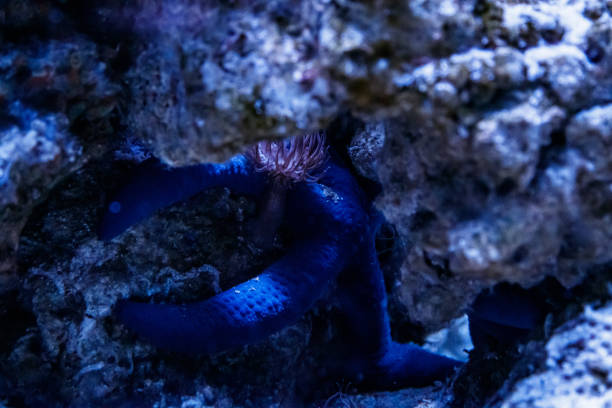Title: Unraveling the Enigma of Cuttlefish Camouflage
Introduction: Dive into the mesmerizing world of cuttlefish, nature's masters of disguise. These captivating cephalopods possess an unparalleled ability to blend seamlessly with their surroundings, challenging our understanding of marine biology and inspiring cutting-edge technologies. Join us as we explore the intricate mechanisms behind cuttlefish camouflage and its far-reaching implications.

The Marvels of Cuttlefish Physiology
At the heart of cuttlefish camouflage lies a complex system of specialized cells called chromatophores. These pigment-containing sacs are embedded in the cuttlefish’s skin and can expand or contract rapidly, allowing the animal to change its color and pattern within seconds. Beneath the chromatophores lie iridophores, which reflect light to produce iridescent colors, and leucophores, responsible for creating white hues. This intricate layering of cells enables cuttlefish to produce an astounding array of colors and patterns, rivaling even the most advanced human-made displays.
The Neurological Marvel Behind the Magic
The cuttlefish’s ability to change its appearance is not merely a reflexive response but a sophisticated process controlled by its highly developed nervous system. Unlike most animals, cuttlefish can independently control the chromatophores on different parts of their body, allowing for complex patterns and textures. This level of control is made possible by the cuttlefish’s large brain-to-body ratio, which rivals that of some mammals. Recent studies have shown that cuttlefish can even create moving patterns on their skin, a feat that requires precise coordination between their visual perception and motor control.
Evolutionary Advantages of Camouflage
The evolution of such advanced camouflage capabilities in cuttlefish is a testament to the power of natural selection. In the competitive and often dangerous marine environment, the ability to blend in with surroundings offers significant survival advantages. Cuttlefish use their camouflage not only to hide from predators but also to ambush prey and communicate with potential mates. This multi-functional adaptation has allowed cuttlefish to thrive in diverse habitats, from coral reefs to open ocean environments.
Beyond Camouflage: Communication and Courtship
While camouflage is the most well-known function of cuttlefish color-changing abilities, these cephalopods also use their dynamic skin patterns for communication. During courtship displays, male cuttlefish create dazzling light shows on their skin to attract females. Interestingly, some males have been observed using split-personality displays, showing courtship patterns on one side of their body while maintaining camouflage on the other to deceive rival males. This sophisticated use of color and pattern demonstrates the cuttlefish’s cognitive complexity and social intelligence.
Inspiring Biomimetic Technologies
The remarkable camouflage abilities of cuttlefish have not gone unnoticed by scientists and engineers seeking to develop new technologies. Researchers are working on creating adaptive camouflage systems inspired by cuttlefish, with potential applications ranging from military use to fashion and architecture. One promising area of research involves developing soft, flexible displays that can change color and texture in real-time, mimicking the cuttlefish’s skin. These bio-inspired technologies could revolutionize fields such as adaptive clothing, smart building materials, and even next-generation electronic displays.
Conservation Challenges and Future Research
Despite their fascinating abilities, cuttlefish face numerous threats in the wild, including overfishing and habitat destruction. As key components of marine ecosystems, the decline of cuttlefish populations could have far-reaching consequences for ocean biodiversity. Conservation efforts are crucial to protect these remarkable creatures and the valuable scientific insights they offer. Ongoing research into cuttlefish camouflage continues to uncover new aspects of their biology, with recent studies exploring the genetic basis of their color-changing abilities and the potential for using cuttlefish-inspired materials in medical applications.
The Price of Innovation
While the potential applications of cuttlefish-inspired technologies are exciting, they come with a significant price tag. Research and development in this field require substantial investment, with some estimates placing the cost of developing adaptive camouflage systems in the range of hundreds of millions of dollars. However, the market impact of such innovations could be enormous, potentially revolutionizing industries from defense to consumer electronics. As research progresses, we can expect to see more affordable applications of this technology entering the market, starting with high-end products and gradually becoming more accessible to the general public.
In conclusion, the cuttlefish’s mastery of camouflage represents one of nature’s most captivating phenomena. From the intricate biological mechanisms that enable their color-changing abilities to the evolutionary advantages they confer, cuttlefish continue to astound scientists and inspire innovative technologies. As we delve deeper into the mysteries of these remarkable creatures, we not only gain valuable insights into the wonders of marine life but also unlock potential solutions to human challenges. The story of cuttlefish camouflage serves as a powerful reminder of the incredible ingenuity found in nature and the importance of preserving our oceans’ biodiversity for future generations to study and admire.





